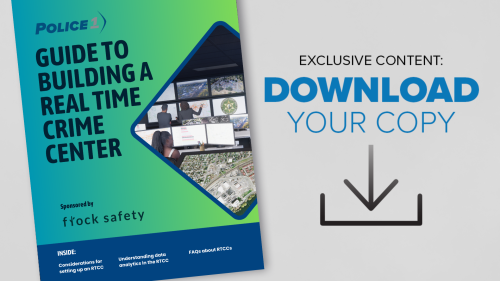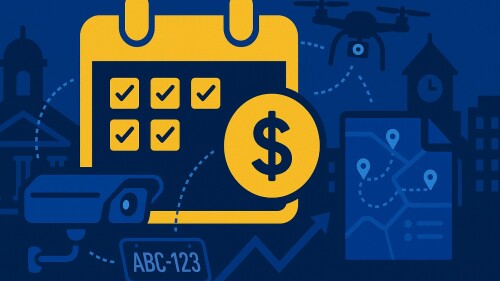Agency name: Chino Police Department (CPD), Chino, California
Agency size: 127 sworn, 76 professional staff employees
Population served: About 100,000
Date RTCC launched: The CPD RTCC unofficially launched and began assisting patrol officers in 2017. The center was fully operational in 2018. The RTCC operates seven days a week with 11.5 to 18 hours of coverage per day.
Typical calls RTCC responds to: The full range of incidents experienced in the City of Chino, from petty theft to shootings, robberies and homicides. In addition to supporting the CPD from offices within its headquarters, the RTCC aids nearby law enforcement agencies when needed and has been an operational model for agencies nationwide when looking to start their own centers.
The challenge: Providing crime analysts with the tools to do their jobs
Crime analysts are an invaluable tool for law enforcement agencies. They have the expertise and know-how to assess specific data and use that information to create a bigger picture of what’s going on. Their analysis can help law enforcement commanders make better decisions in deploying resources, and achieve more success in solving crimes, and in some cases preventing them.
The caveat: Crime analysts can do their job much more efficiently when they have access to timely and accurate information.
The solution: FlockOS 911
Helping their crime analysts do their jobs effectively is why the CPD’s RTCC is connected directly to the department’s 911 data system/call center, which has been equipped with Flock Safety’s FlockOS 911. This platform provides officers and analysts with access to live 911 calls, the option to access fast transcriptions of those calls that can be viewed on their screens, and the ability to link in data from license plate readers and available camera feeds.
Stephanie Winters is one of the CPD RTCC’s two crime analysts. “When we come on duty, we log into the CPD’s CAD system just as any dispatcher would,” she said. “We have full dispatch capabilities to create calls, and we monitor any active patrol events that are going on. If something comes up, we utilize our law enforcement databases as well as our city’s intersection cameras and license plate readers to provide useful information to responding officers. If there’s a live 911 call that comes in, then we start looking in that area to see if there are cameras, start running any data that is obtained through our databases, and gather as much intel as we can for those responding officers.”
911 analysis in action
Here’s an example of how the CPD RTCC’s analysts use their CAD access, FlockOS 911 and their know-how to enhance police work on the street:
“Anytime we hear a vehicle burglary call for service, we listen to see if there was a large amount of money possibly taken,” said Winters. “If so, this is likely a case where the suspects were lying in wait at the bank to see people coming out, or they have an inside person who knows which customers have a large amount of cash on them. Either way, they then break into the victim’s unattended car to steal it if they can.”
When such crimes happen, the CPD RTCC’s crime analysts study the route the victim’s car took prior to the crime, using their access to intersection cameras and license plate readers. They then look for the suspects’ vehicle that followed the victim, compile data about them and use the same technology to detect the future movement of that vehicle for later apprehension.
In some cases, the suspects are caught while lying in wait for another victim. “They’re subsequently arrested,” said Winters. “Often we’re able to recover the last victim’s money because we were able to work so quickly and know the different patterns that these criminals use.”
RTCC delivering noticeable results
Since opening its RTCC in 2017, the Chino Police Department has seen positive results.
“We’ve seen a substantial increase in the number of cases solved, how quickly they’re solved and how quickly property is returned to our victims,” Winters said. “Our officers also love it when we give them things to hunt for. If we know that a specific vehicle has been involved in commercial burglaries and enters our city, we’ll go to the cameras and alert our officers to its location so that they can stop it. We’ve also been able to use video surveillance to reduce catalytic converter and vehicle thefts from occurring because we know what ‘casing the job’ looks like and we know when to start officers enroute to stop it.”
All told, crime analysts are helping to make the City of Chino and surrounding areas safer and better policed, which is why “our city completely supports our center and our department,” said Winters.
[Complete the “Download this Police1 Resource box” on this page to download a one-page summary of this case study for easy reference.]













